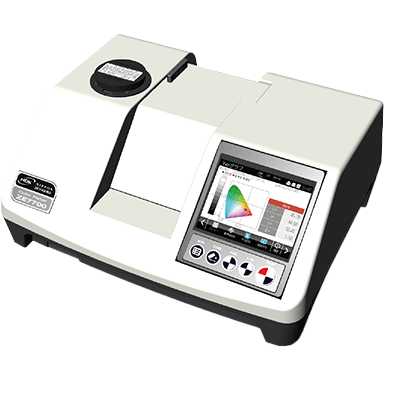What Is a Colorimeter?

A colorimeter, also known as a spectrophotometer, chromometer, or color meter, is an instrument designed to numerically express colors. There are two main methods for color measurement: visual colorimetry and physical colorimetry.
Visual colorimetry involves visually comparing a sample with a reference color group and selecting the closest match to obtain numerical values. While effective due to the human eye’s sensitivity in comparing adjacent colors, it’s subjective and prone to individual variations. It’s typically used when precision is not critical, such as measuring sky or ocean colors.
Physical colorimetry, in contrast, uses instruments instead of human eyes to measure colors under controlled lighting and receiving conditions. This method utilizes colorimeters, which come in stimulus value direct-reading and spectrophotometric types.
Stimulus value direct-reading colorimeters use three sensors corresponding to the human eye’s sensory tissues. They are simple, cost-effective, compact, and portable, making them ideal for production and inspection departments. Spectrophotometric colorimeters, with multiple sensors, provide more accurate measurements and are mainly used in research departments.
Uses of Colorimeters
Colorimeters are essential in industries where consistent color production is crucial. They ensure reliable color management based on recognized color ranges for each field as per standards. Their applications vary from defense standards to standard color samples and general color management in industries such as safety sign production. Accurate color measurement, essential in these fields, is achieved using colorimeters.
Principles and Types of Colorimeters
Colorimeters measure colors using two primary methods:
1. Stimulus Value Direct-Reading:
These colorimeters measure color using three sensors that mimic the three visual cells of the human retina, along with a color value calculation section similar to the brain’s color perception. They measure the three stimulus values X, Y, and Z directly under standard illuminants, specified by the International Commission on Illumination (CIE).
These colorimeters are compact, lightweight, and cost-effective but may have measurement errors. They are commonly used in manufacturing and service departments.
2. Spectrophotometry:
Spectrophotometric colorimeters separate the functions of human visual cells and the brain into spectrophotometric, light-receiving, and computing units. They measure reflected light from a sample at multiple wavelengths using a diffraction grating and multiple sensors. The data is used for integration calculations to determine the X, Y, and Z values, allowing for advanced color analysis.
Spectrophotometric colorimeters offer high accuracy but are larger, more expensive, and require careful management. They are primarily used in research and development departments.